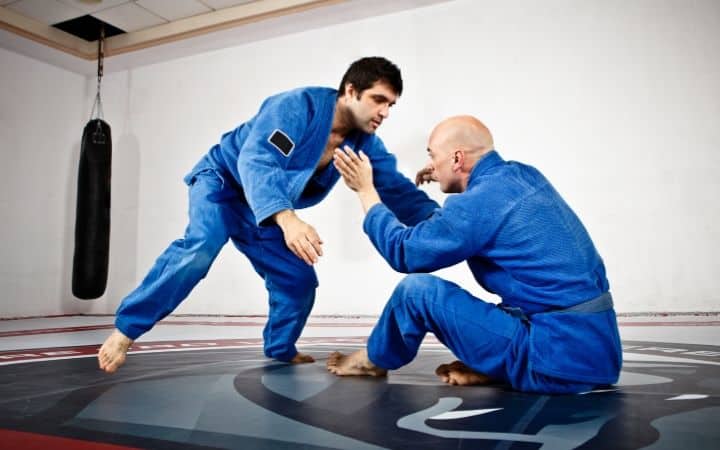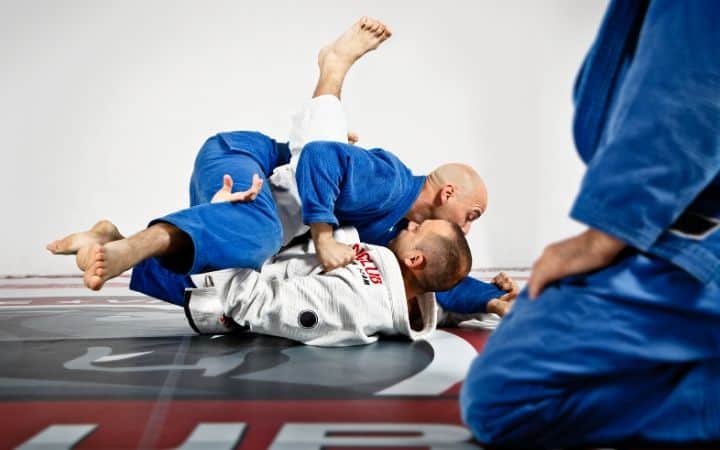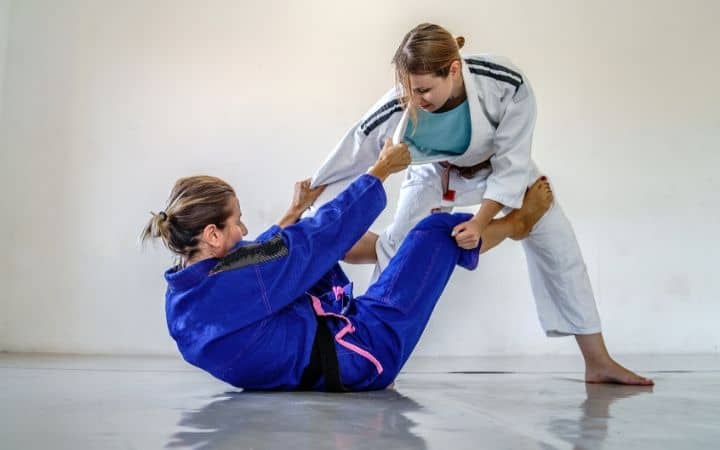What is the best type of submission in BJJ? Why, the one that works, of course. The second best, though, is a submission you just happen to stumble upon. These kinds of unexpected moves that we discover by mistake usually tend to grow into some of the best moves in our arsenals.
Or, perhaps I should say, the moves that highly renowned black belts like Erik Paulson stumble upon turn into our best moves! Just check out his straight arm bar from the highly underrated stretch guard if you don’t believe me.
What Is the Stretch Guard?
The stretch guard is a position that everyone plays, but that few know they’re actually playing. If you come to think of it, it is the first open guard we play in Jiu-Jitsu. The position is simple, but it’ll require a few sneaky details to really work for you as well as it does for Erik Paulson. There’s no point in attempting a straight arm bar from the stretch guard if you do not understand the guard first, is there?
There are three things that make or break the stretch guard: grips, feet placement, and weight distribution. None of them are too complicated when you’re aware of them.
For the stretch guard to work, you need to be strongly connected to your opponent’s upper body. Ideally, with one low sleeve grip and one collar grip, preferably on the same side. The key detail is to stay strongly connected at these points.
The second part is the feet placement. At least one of your feet needs to be in the hip fold of your opponent on the same side as the arm you are controlling. When you place the foot there, though, you should be as close to your opponent as possible. The other foot can go pretty much anywhere on the other side, ranging from the hip to the shoulder.
Completing the triad is weight distribution. It won’t matter how tight your grips are if their hips can move. The trick is very simple – lift your own hips an inch or two off the mat to make your feet as heavy as lead, effectively locking theirs in place.
Now you’re ready for the most important thing – stretch the opponent. How? Extend your legs as much as you can.

Straight Arm Bar Setup from the Stretch Guard
Getting the straight arm bar from the stretch guard is the highest percentage move you have. It will work because it is based on a reaction that’s almost guaranteed to happen every time. In other words, you get them to enter into the arm lock by themselves.
Let’s go point by point in our triad again. As Erik demonstrates, the grips are now on the same arm. Paulson uses a cross grip on the wrist and a direct triceps grip right above the elbow. This second grip is the key detail that determines if this technique succeeds or fails.
The feet placement is simple – one foot on the hip (same side as the arm you are planning on attacking) and the opposite on the biceps/shoulder. That offers diagonal control over the upper body and opens up attacks. Weight distribution remains the same – hips slightly off the mat.
The reason Paulson says this move won’t work as a direct attack is that it is easy to see coming. However, if you mask it with a triangle as he does, you’ll most certainly get the arm bar.
Paulson accomplishes this by placing the back of his heel on their neck. The heel is just there to elicit a reaction from the impending triangle attack. This is also the moment that you stretch the opponent by extending your leg that’s controlling their hip.
Once you stretch them out they one have one hip to move and one direction to move it in – towards you.
That’s when you pounce. As they move forward, swing your leg over the head and you’re ready to hit the straight arm bar. That all-important grip behind the elbow is still there, securing the arm in place. In fact, it doubles as extra pressure on the elbow once you wrap it all up by putting your hips into it.

Who Is This Erik Paulson Guy Again?
On the off chance that you have no idea who Erik Paulson is, consider this a short introduction. He is a black belt in Judo, Taekwondo, and BJJ.
Still not convinced he is the real deal? Well, to begin with, his BJJ black belt is from Rigan Machado. His BJJ pedigree also includes training extensively with Rickson, Rorion and Royce Gracie in the famous Gracie garages.
A lifelong martial artist, Paulson competed in anything and everything from Karate to Catch Wrestling to MMA. He is a submission grappler by preference, with 9 of his 11 MMA victories coming by way of tapping his opponents out. He is also the coach behind huge MMA stars like Josh Barnett, Cub Swanson, and the legendary Ken Shamrock.
Erik Paulson is an old school grappler, who prefers lots of catch wrestling moves and isn’t afraid to experiment. That’s why he comes up with moves like the stretch guard straight arm bar. Experimentation pays off, particularly if you have Erik Paulson’s experience.

Will It Work?
I’m sure this straight arm bar from the stretch guard won’t work if you never give it a try. Otherwise, it has all the hallmarks of a killer move.
It is easy to set up, threatens another high percentage submission (the triangle) and works in gi and no-gi. As a bonus, you can pull this move off against both kneeling and standing opponents as well. Now, watch the video again and go tap people with it!

We care about Jiu Jitsu so much that we decided to create this page for all the people like us – that eat, breath and live the Jiu Jitsu Lifestyle! We truly hope our content will make every one of your days better, on the mat and off the mat!
